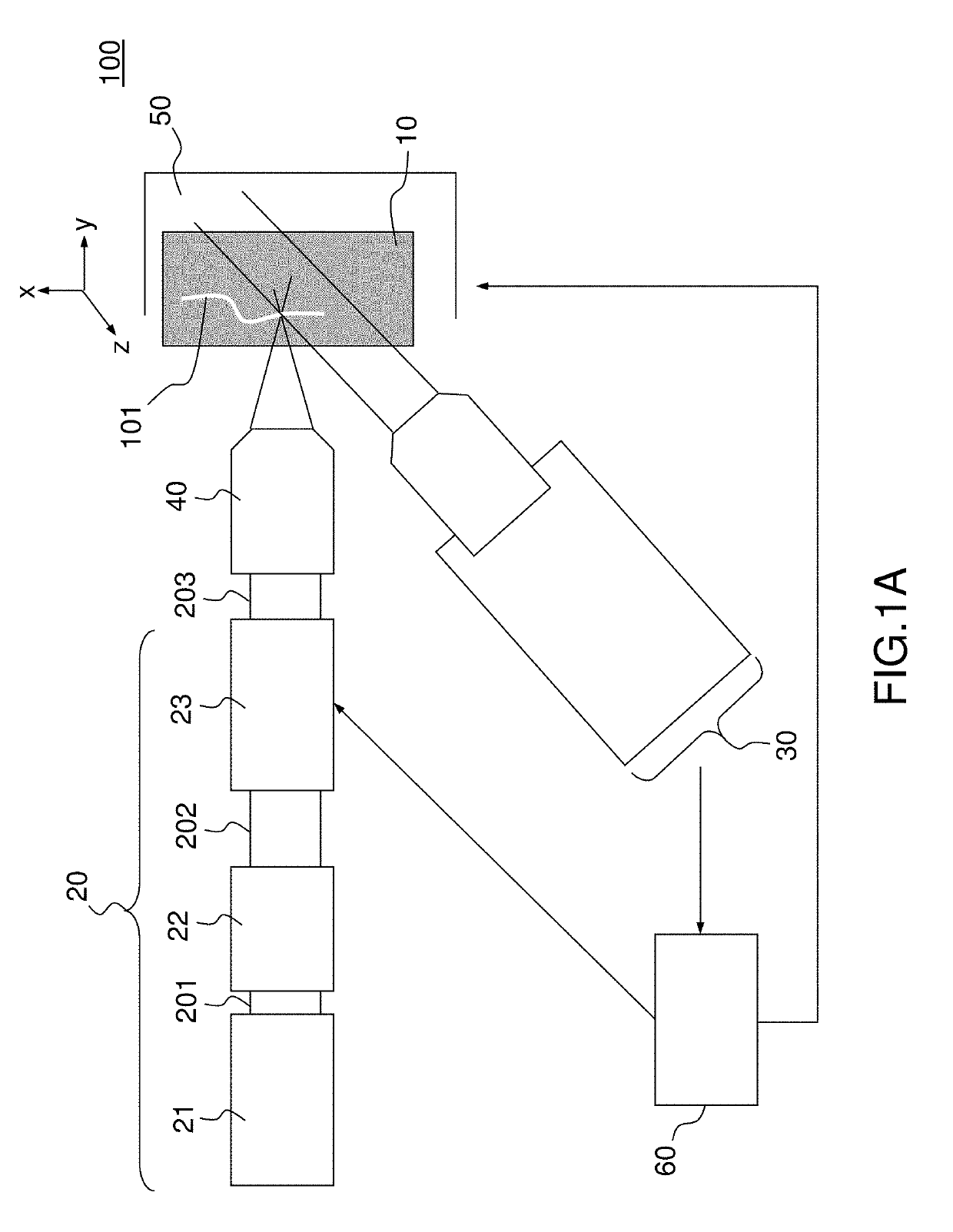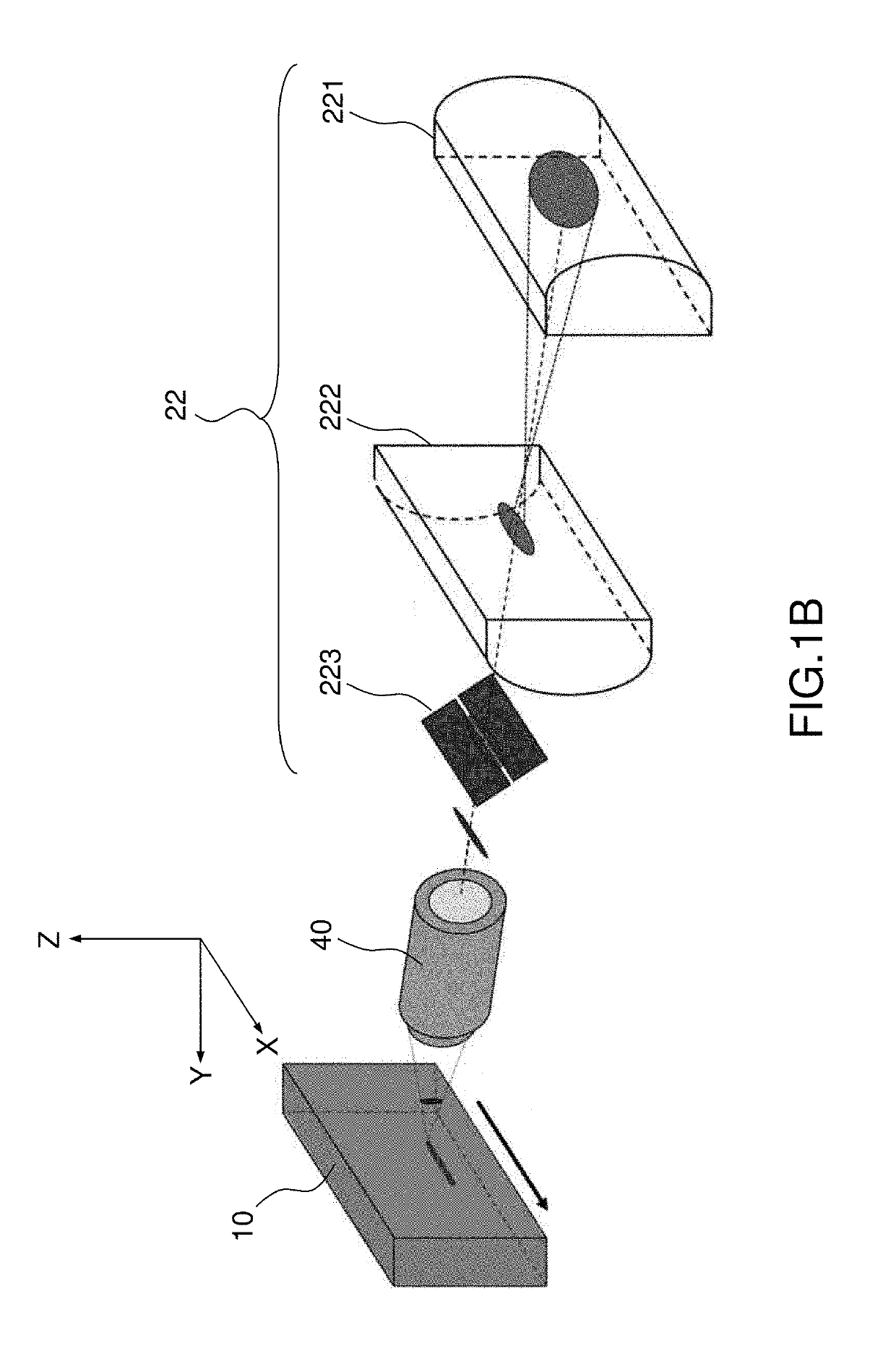Methods and systems for optical functionalisation of a sample made of semiconductor material
- Summary
- Abstract
- Description
- Claims
- Application Information
AI Technical Summary
Benefits of technology
Problems solved by technology
Method used
Image
Examples
Embodiment Construction
[0074]FIG. 1 illustrates a first example of a laser marking system 100 for deep optical functionalization in a sample 10 of semiconductor material, as described here.
[0075]The laser marking system 100 includes, in particular, an emission source 20 of a laser beam 203 formed of pulses and a focusing system 40 for focusing of the laser beam in the sample (e. g. a microscope objective, a converging lens, a parabolic mirror, etc.). The resulting focal volume can be moved deep into the sample in a pattern 101 by means of relative means of movement 50 of the laser beam and the sample. In the example of FIG. 1A, the relative means of displacement 50 include a plate for moving the sample along the 3 axes X, Y, Z. However, each of the translations can be replaced by an optical device adapted to the movement of the beam, for example a lens called a “f-theta lens”. System 100 also includes a device 30 for measuring the real part of the refractive index in the sample and a control unit 60 of th...
PUM
 Login to View More
Login to View More Abstract
Description
Claims
Application Information
 Login to View More
Login to View More - R&D
- Intellectual Property
- Life Sciences
- Materials
- Tech Scout
- Unparalleled Data Quality
- Higher Quality Content
- 60% Fewer Hallucinations
Browse by: Latest US Patents, China's latest patents, Technical Efficacy Thesaurus, Application Domain, Technology Topic, Popular Technical Reports.
© 2025 PatSnap. All rights reserved.Legal|Privacy policy|Modern Slavery Act Transparency Statement|Sitemap|About US| Contact US: help@patsnap.com



